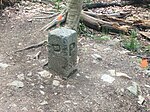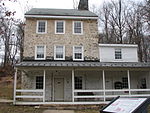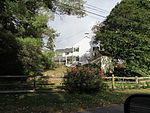Wesley M.E. Church
Churches completed in 1854Churches in New Castle County, DelawareChurches on the National Register of Historic Places in DelawareDelaware Registered Historic Place stubsDelaware building and structure stubs ... and 5 more
Greek Revival church buildings in DelawareMethodist churches in DelawareNational Register of Historic Places in New Castle County, DelawareSouthern United States church stubsUse mdy dates from August 2023

Wesley Methodist Episcopal Church is a historic Methodist Episcopal church located at McClellandville, New Castle County, Delaware. It was built in 1854, and is a frame, one story, one bay by three bay, gable-roofed Greek Revival-style building. It was sheathed in weatherboard and featured decorative wood shingles on the facade and corner pilasters.It was added to the National Register of Historic Places in 1983.
Excerpt from the Wikipedia article Wesley M.E. Church (License: CC BY-SA 3.0, Authors, Images).Wesley M.E. Church
New London Road,
Geographical coordinates (GPS) Address External links Nearby Places Show on map
Geographical coordinates (GPS)
| Latitude | Longitude |
|---|---|
| N 39.711617 ° | E -75.778896 ° |
Address
Wesley M. E. Church
New London Road
19717
Delaware, United States
Open on Google Maps









